
Honest comparison of merino wool and synthetic base layers. Real experiences with odor, durability and performance from actual outdoor adventures.
Your base layer is the foundation of every great outdoor adventure. Get this right, and everything else just works better.
Quick Start: Base Layer Guide
New to base layers? Start with The Two Paths to Performance
Choosing merino? Jump to When Merino Wool Excels
Considering synthetic? Go to When Synthetic Wins
Activity-specific needs? Skip to Matching Base Layers to Your Adventures
The invisible performance layer
You barely notice it when it’s working well, but you’ll definitely know when it’s not. Your base layer – that crucial first layer next to your skin – can make the difference between a comfortable day out and a miserable experience of dampness, chills, and chafing.

Unlike cotton t-shirts that hold moisture against your skin, technical base layers actively work to keep you comfortable by managing the moisture your body produces and helping regulate your temperature.
The two paths to performance
The world of the base layer offers two excellent but different approaches. Merino wool is an ideal base layer option if you prioritise natural materials, breathability, and odour resistance. At the same time, synthetic fabrics are ideal if you prioritise affordability, quick drying, and durability.
Whether you are hillwalking, cycling, climbing or running a baselayer should form a fundamental part of your layering system.
Merino Wool: Nature’s Technical Fibre
Merino wool base layers are naturally breathable, insulating and odour-resistant. They also have some seriously cool properties which will keep you comfortable and at the right temperature in a broad range of conditions.
The magic: Natural temperature regulation and odour resistance
Best for: Multi-day adventures, variable conditions, comfort seekers
Key benefit: Stays comfortable across wide range of temperatures and activities
Synthetic Materials: Engineered Performance
Synthetic base layers are high-wicking, fast-drying, lightweight and durable. They’re also less expensive than wool or silk. As a result, they’re now the base layer of choice for many people.
The term ‘synthetic’ actually covers a wide range of different man-made materials, each with subtly different properties. For instance, nylon (polyamide) fabrics can be more durable than polyester but are usually less breathable. Most synthetic base layers (tees and underwear) are made from polyester.
The magic: Superior moisture management and durability
Best for: High-intensity activities, frequent washing, budget-conscious choices
Key benefit: Wicks moisture fastest and dries quickest
Time to look at each of these in more detail, starting with merino.
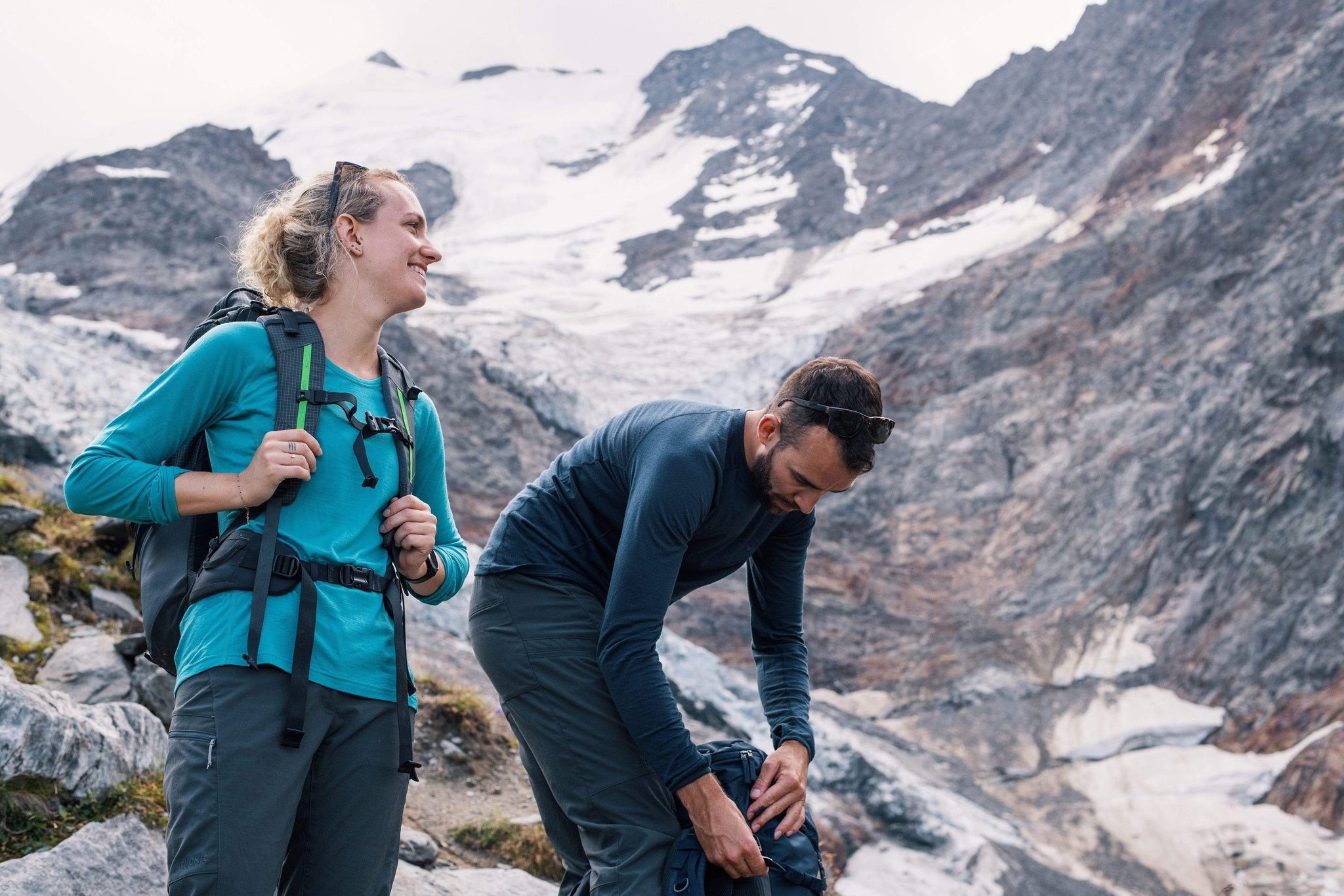
When Merino Wool Excels
Wool is naturally breathable
Merino wool is a living fibre that adapts to your environment and body temperature. All natural fibres can absorb and desorb moisture but wool is extremely good at it.
Wool does this by absorbing moisture vapour into the structure of the fibre itself, before expelling it into the outside air. This helps to keep your temperature level in the same way as wicking – evaporating sweat to cool you down when you overheat, and keeping your skin surface dry to keep you warm when you cool down.
In fact, wool fibres can absorb up to 35% of their weight in water before feeling damp to the touch. When your base layer can’t absorb any more moisture, its fibres will wick in the same way as synthetic fibres.
Wool is temperature regulating
Breathable wool fabrics control the rate of evaporation much better than synthetic ones. Wool releases moisture from its fibres quickly when your body surface is hot and damp and slows down when it’s cold and dry.
There’s also a clever chemical reaction that releases heat when water molecules react with molecules in the wool fibre. This protects against rapid cooling when you get really sweaty after a hard climb.

The Merino Advantage
Natural Comfort: Soft, non-itchy, feels great next to skin
Temperature Regulation: Keeps you cool when warm, warm when cool
Odour Resistance: Natural antimicrobial properties
Moisture Management: Absorbs moisture while still feeling dry
UV Protection: Natural sun protection for exposed skin
Merino wool is naturally insulating
Wool fibres have a natural waviness (or ‘crimp’) which creates lots of pockets of insulating air when they’re layered together. The finer the fibre, the wavier it is, and the more air pockets it creates. This gives fine merino wool an excellent warmth-to-weight ratio.
Because merino wool fibres are so springy, they don’t lose these pockets of air when they get wet, providing insulation even when damp.
Merino wool is naturally odour-resistant
Wool has inbuilt stink-fighting, unlike synthetic base layers which need a treatment like Polygiene to stay fresh. By keeping your skin surface dry, wool reduces the growth of odour-causing bacteria in the first place. But wool also traps odours inside the structure of its fibres, releasing them only when the garment is washed. On top of that, research has also shown that Merino fibres provide a less hospitable environment for odour-causing bacteria than synthetics.
Biodegradable
As a natural fibre, merino wool will biodegrade under the right conditions rather than hanging around in the environment for many years.
Fire retardant
Merino wool is naturally flame-resistant. This means that it will not melt or stick upon coming into contact with fire.
Understanding Merino Quality
Merino wool is much finer than other wool fibres. To qualify as ‘Merino’, the wool fibres have to be less than 24 microns in diameter (around 1/10th of the width of a human hair). Our pure merino range is 17.2 microns. The weight of the fabric is measured in grams per square metre (gsm) – this is a good guide for how warm the base layer is.
Fibre Thickness (Microns):
- 17-19 microns: Ultra-fine, softest, most expensive
- 19-22 microns: Excellent balance of comfort and durability
- 22+ microns: More durable, less soft, better value
Weight Categories:
- Lightweight (150gsm): For warm conditions or high activity
- Midweight (200gsm): Versatile choice for most conditions
- Heavyweight (250gsm): Cold weather and low activity levels
Next to skin comfort
Because merino wool fibres are so fine, they are softer than standard wool and itch-free for all but the most sensitive of skin. It’s hard to explain why, but merino wool base layers also feel much nicer to wear than man-made fabrics.
And because the fibres can absorb so much moisture before the fabric starts to feel damp, merino wool base layers rarely feel clammy against the skin – unless you’ve been sweating absolute buckets!
Find out more about why we think Merino wool is a fantastic part in your layering system.
Perfect Merino Scenarios
Multi-day adventures: Wear the same base layer for days without offensive odours
Variable activity levels: Hiking with rest stops, climbing with belaying
Sensitive skin: Natural fibres are gentler than synthetics
Cold weather: Excellent insulation properties when layered
Travel: Pack fewer items thanks to odour resistance and natural anti-microbial resistance
Example: A three-day hiking trip where washing isn’t possible, or is just undesirable.
When Synthetic Wins
Synthetic fibres are hydrophobic, which means they don’t absorb much water. Because of this, they dry very quickly making them popular with paddlesports and wick sweat away from your skin, which is a major reason they make such a great base layer material for high energy output activities such as trail running and cycling.
Wicking works with your skin and any outer layers to keep you at the right temperature throughout the day and reduce chafing. Spaces in the fabric's structure pull moisture (sweat) into them by a process called ‘capillary action’ and move it to the outer surface where it can evaporate.
The rapid evaporation cools you down, preventing you from overheating. And it also stops you from getting clammy and cold when your body cools down. You might see this referred to as moisture regulating or temperature regulating, but these are just fancy terms for dealing with sweat and keeping you comfortable.

The Synthetic Advantage
Synthetic base layers are highly durable
Part of the reason synthetic fabrics have become so widespread is due to their durability – they resist snags, tears, abrasion and pilling. This makes them ideal for climbing. They can cope with some seriously rough use and are easier to wash and care for – handy if you are travelling with limited washing/drying facilities.
Synthetic base layers are highly breathable
Breathability is about how well a fabric allows water vapour to pass from the inside (next to your skin) to the outside (your next layer or the air outside). However, as polyester and nylon fibres don’t absorb moisture, synthetic base layers will vary quite a lot in their breathability depending on the fabric’s weight and structure.
For instance, our Vayper range uses a lightweight mesh knit which creates lots of tiny holes for excess body heat and moisture to escape. Our Koulin Trail range follows a similar principle with mesh panels under the arms and across the back. As a general rule for synthetic base layers: the more light you can see through, the more breathable it will be.
Superior Wicking: Moves moisture away from skin fastest
Quick Drying: Back to dry comfort in minutes, not hours
Durability: Resists tears, pilling, and general wear
Easy Care: Machine wash and dry without special treatment
Consistent Performance: Always works the same way
Better Value: Generally less expensive than merino wool

Synthetics are lightweight
Because synthetic fibres are so strong, they can be knitted or woven into incredibly lightweight fabrics. This is a serious advantage for keeping your pack-size down on multi-day trips.
Perfect Synthetic Scenarios
High-intensity activities: Trail running, fast packing, cycling
Hot weather: Superior cooling through rapid evaporation
Frequent washing needed: Travel, daily use, multiple activities
Budget-conscious choices: Excellent performance per pound
Rough use: Climbing, scrambling, abrasive activities
Example: A hot summer trail run where you’ll sweat heavily
Kind to the skin
Fine, smooth fibres make synthetic fabrics much kinder to hypersensitive skin and suitable for people with wool allergies.
Synthetic Material Types
Polyester: Most common, excellent wicking, very durable
Nylon (Polyamide): More durable than polyester, softer feel
Polypropylene: Fastest wicking, lightest weight, can retain odours
Blends: Combine benefits of different synthetic fibres
The Best of Both Worlds: Merino Blends
Blended fabrics combine the natural advantages of merino wool with the durability and easy care of synthetic fabrics. Blended base layers are the best all-rounders.
We use a technology called ‘corespun’ for our Merino underwear, gloves and hats, wrapping a nylon and spandex core with merino wool. Still 86% Merino, this makes the fabric more durable and more elastic for a better fit and recovery after use.
Why Blends Make Sense
Enhanced Durability: Synthetic fibres strengthen pure merino
Better Stretch: Improved fit and recovery
Faster Drying: Synthetic content speeds moisture removal
Cost Balance: Performance benefits at lower cost than pure merino
Common Blend Ratios:
- 80% Merino/20% Synthetic: Maintains most merino benefits, adds durability
- 50/50 Blends: Balance of natural and synthetic properties
- Core-spun: Synthetic core wrapped in merino for best of both
Matching your Base Layers to Your Adventures
When a synthetic base layer is the best choice
Synthetic base layers are ideally suited to warm weather or high-intensity activities like trail running and cycling. Their high-wicking and fast-drying fabrics keep you cool and dry and reduce the risk of chafing or overheating. Because the fibres don’t absorb water, they won’t get overpowered by sweat and become heavy.
When a merino base layer is the best choice
Merino wool base layers are best suited to mild – cold weather or stop-start activities like hiking and climbing. merino wool’s natural breathability and temperature control properties keep you more comfortable in a wide range of conditions, even when you slow down. Because of their odour resistance, merino wool base layers are perfect for multi-day backpacking and bikepacking trips (mostly just to spare everyone you come into contact with!). Higher gsm merino base layers can add vital warmth to layering systems for winter sports like mountaineering, ice climbing or skiing.
Baselayers for Day Hiking and Walking
Your need: Comfort through changing activity levels and conditions
Best choice: Midweight merino or quality synthetic
Key features: Temperature regulation, moisture management
For High-Intensity Activities
Your need: Maximum moisture removal and cooling
Best choice: Lightweight synthetic with excellent wicking
Key features: Rapid moisture transfer, quick drying, minimal weight

For Multi-Day Adventures
Your need: Performance with minimal washing
Best choice: Merino wool for odor resistance
Key features: Anti-microbial properties, comfort over time
For Cold Weather Activities
Your need: Insulation plus moisture management
Best choice: Midweight or heavyweight merino
Key features: Warmth retention, breathability, comfort under layers

For Hot Weather Adventures
Your need: Maximum cooling and comfort
Best choice: Lightweight synthetic with mesh panels
Key features: Rapid evaporation, sun protection, minimal coverage
Key Features That Matter
Fit Considerations
Next-to-skin fit: Essential for moisture management
Seamless or flat seams: Prevents chafing under pack straps
Longer back: Stays tucked in during active movement
Thumb loops: Keep sleeves in position when layering
Construction Details
Mesh zones: Enhanced breathability in high-sweat areas
Zoned construction: Different fabrics where you need them
Antimicrobial treatment: Synthetic odour control (though not as effective as merino)
UPF rating: Sun protection for exposed activities
Activity-Specific Recommendations
The Sweaty Hiker
Challenge: Heavy perspiration, varied terrain
Solution: High-wicking synthetic with ventilation features
Why: Fastest moisture removal prevents overheating
The Multi-Day Trekker
Challenge: No washing facilities, pack weight matters
Solution: Lightweight merino with good odour resistance
Why: Wear longer between washes, natural comfort
The Budget-Conscious Adventurer
Challenge: Want performance without high cost
Solution: Quality synthetic or merino blend
Why: Excellent performance-to-cost ratio
The Comfort Seeker
Challenge: Want to feel good all day long
Solution: Pure merino in appropriate weight
Why: Natural comfort and temperature regulation
The Gear Minimalist
Challenge: One base layer for all conditions
Solution: Midweight merino blend
Why: Most versatile across conditions and activities
Common Mistakes to Avoid
Cotton Confusion: Cotton kills – it holds moisture and loses insulation when wet
Wrong Weight: Too heavy overheats; too light doesn’t provide enough benefit
Poor Fit: Too loose doesn’t wick properly; too tight restricts movement
Neglecting Care: Even technical fabrics need proper maintenance
One-Size-Fits-All: Different activities often need different base layers
Care and Longevity
Merino Care
Washing: Less frequent washing needed, use wool-specific detergents
Drying: Air dry when possible, low heat if tumble drying
Storage: Clean and dry, preferably laid flat
Repairs: Small holes can be darned, pilling can be removed
Synthetic Care
Washing: Can be washed frequently, regular detergent fine
Drying: Air dry or machine dry on any heat
Odour Control: May need antimicrobial treatments refreshed
Durability: Generally more robust than merino
Our Approach: Performance Meets Responsibility
We design base layers with real-world use in mind:
Material Selection:
- Responsible Wool Standards -certified merino from ethical sources
- Recycled synthetic materials where possible
- Blends optimised for specific activities
Feature Focus:
- Comfort through long days of varied activity
- Durability for frequent use and washing
- Versatility across different activities and conditions
Building Your Base Layer Collection
The Minimalist Approach
One versatile base layer: Midweight merino blend
Covers: Most conditions and activities reasonably well
Best for: Occasional outdoor activities, budget constraints
The Activity-Specific Approach
Lightweight synthetic: High-intensity activities
Midweight merino: General hiking and cold weather
Heavyweight option: Extreme cold or static activities
The Complete System
Multiple weights in preferred material
Activity-specific cuts and features
Backup options for extended trips
Making Your Choice
Simple Decision Framework
- How active will you be? (Determines moisture management needs)
- What temperatures do you expect? (Influences weight choice)
- How long between washes? (Merino for longer, synthetic for frequent)
- What’s your budget? (Synthetic and blends offer great value)
- Any skin sensitivities? (Merino often better for sensitive skin)
The Reality Check
The best base layer is one you’ll actually wear. Comfort, fit, and appropriateness to your activities matter more than maximum technical specifications.
Beyond the Base Layer
Remember that base layers work best as part of a complete system:
- Base layer: Moisture management and next-to-skin comfort
- MIdlayer: Additional warmth, transmits moisture
- Insulating layer: Warmth when needed
- Shell layer: Weather protection
Each layer has a job, and they work together to keep you comfortable across changing conditions.
Next up in our series The Complete Guide to Outdoor Clothing: Continue building your layering system by moving up into the fleecy world of the midlayer.
- The Complete Guide to Outdoor Clothing: Layering Systems That Work
- Base Layer Guide: Merino Wool vs Synthetic Materials
- Mid Layers Guide: Fleece and Natural Fibres
- Insulated Jackets: Down vs Synthetic Complete Guide
- Waterproof Jackets: Your Complete Guide to Staying Dry
- Outdoor Trousers, Shorts and Leggings: Your Complete Guide
- Hiking Socks Guide: Materials, Cushioning, and Fit
- Keeping Your Hands Warm: The Complete Guide to Outdoor Gloves


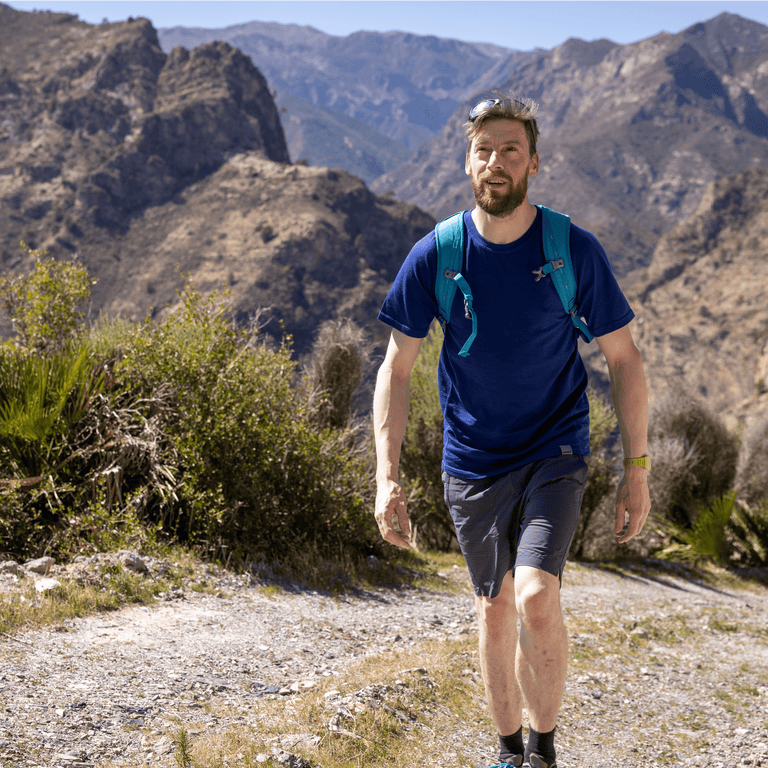
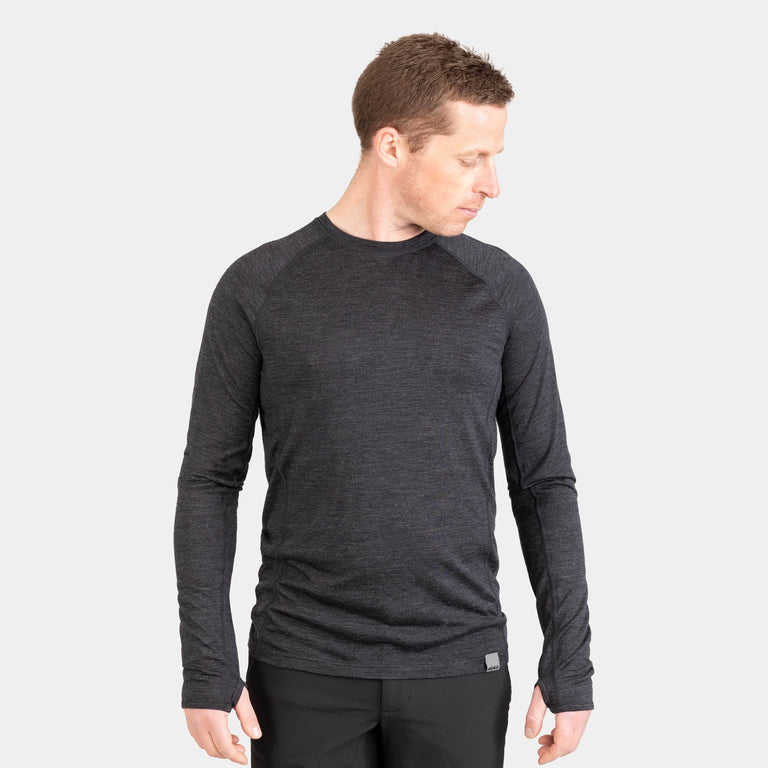

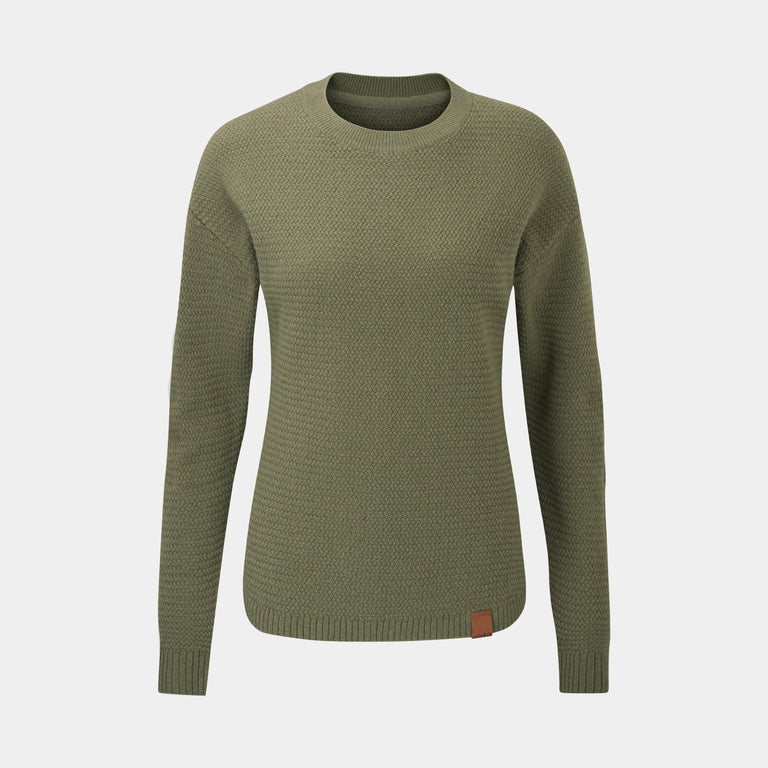

![Kepler Long John [Mens]](http://alpkit.com/cdn/shop/products/mens-kepler-long-black.jpg?v=1624360967&width=768)

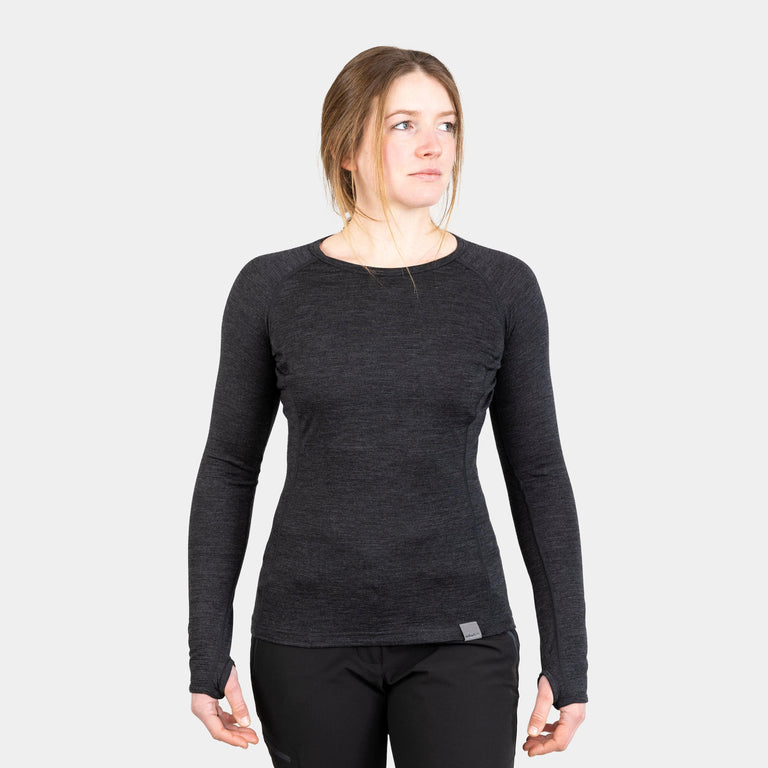
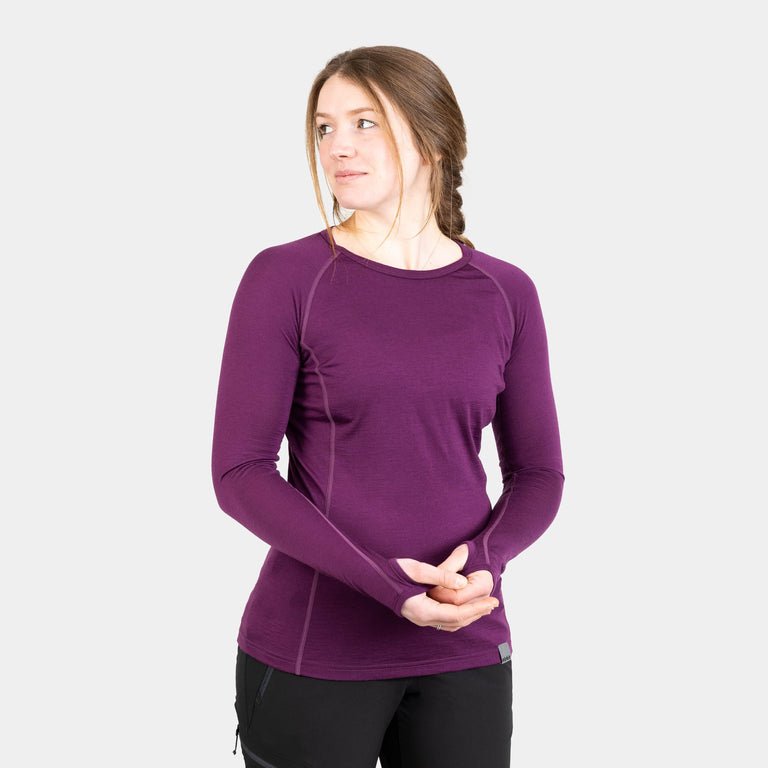
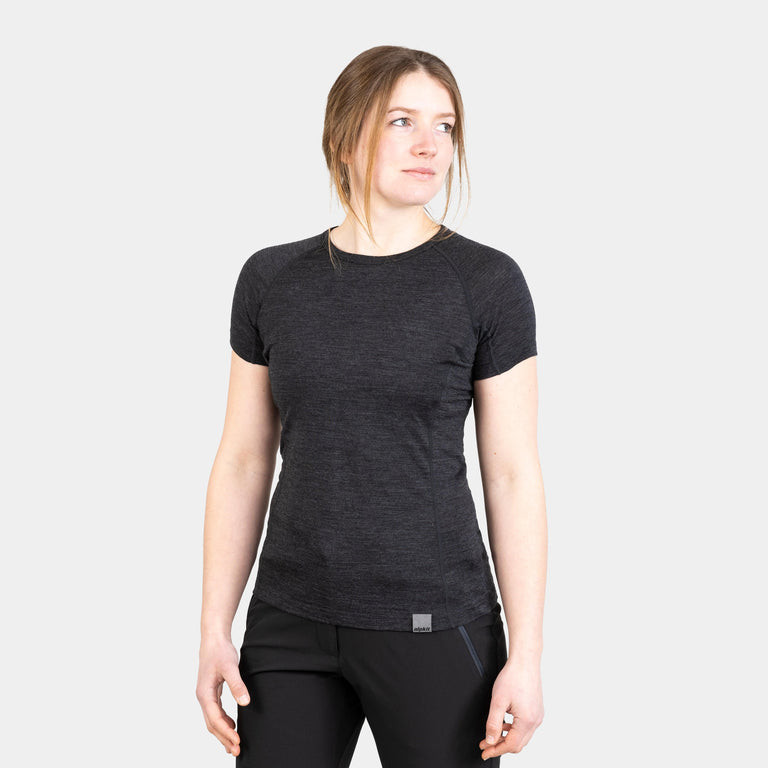

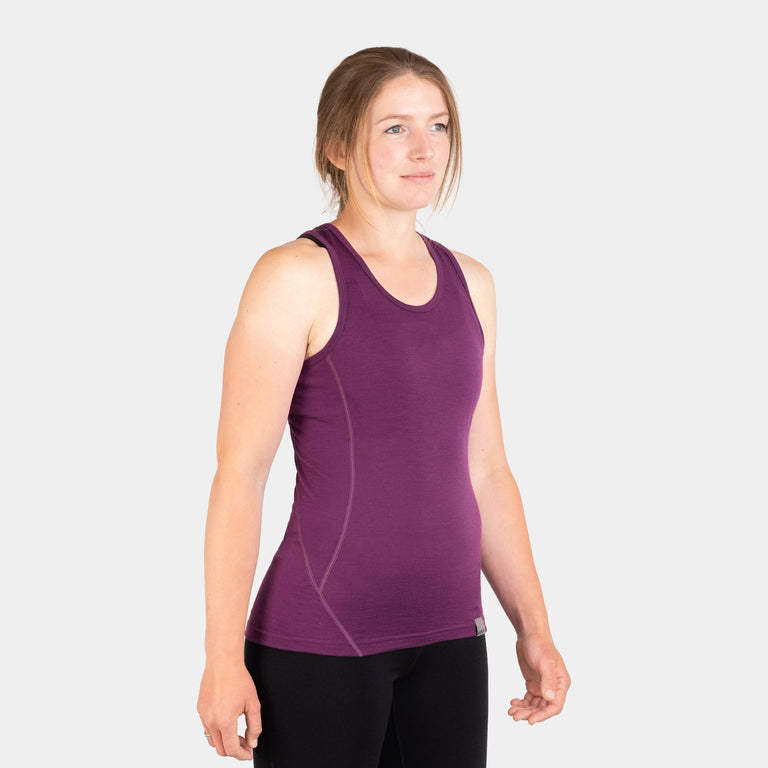
![Kepler Vest [Womens]](http://alpkit.com/cdn/shop/products/kepler-vest-womens_07b896c4-6e7c-40bb-8a9c-a6597aef20eb.jpg?v=1686918371&width=768)
![TCAKKEPPAD-NEM-01-kepler padded boxer [mens] black](http://alpkit.com/cdn/shop/products/mens-kepler-boxers-paded.jpg?v=1695745248&width=768)
![TCAKKEPPAD-NEM-02-kepler padded boxer [mens] black](http://alpkit.com/cdn/shop/products/TCAKKEPPAD-NEM-02-kepler_padded_boxer__5Bmens_5D_black.jpg?v=1695745248&width=768)
![Aztec Long Sleeve [Mens]](http://alpkit.com/cdn/shop/files/mens-aztec-long-sleeve-2025-outer-space.jpg?v=1754663095&width=768)
![Aztec Long Sleeve [Mens]](http://alpkit.com/cdn/shop/files/aztec-ls-mens-2025-outerspace-3.jpg?v=1762536224&width=768)
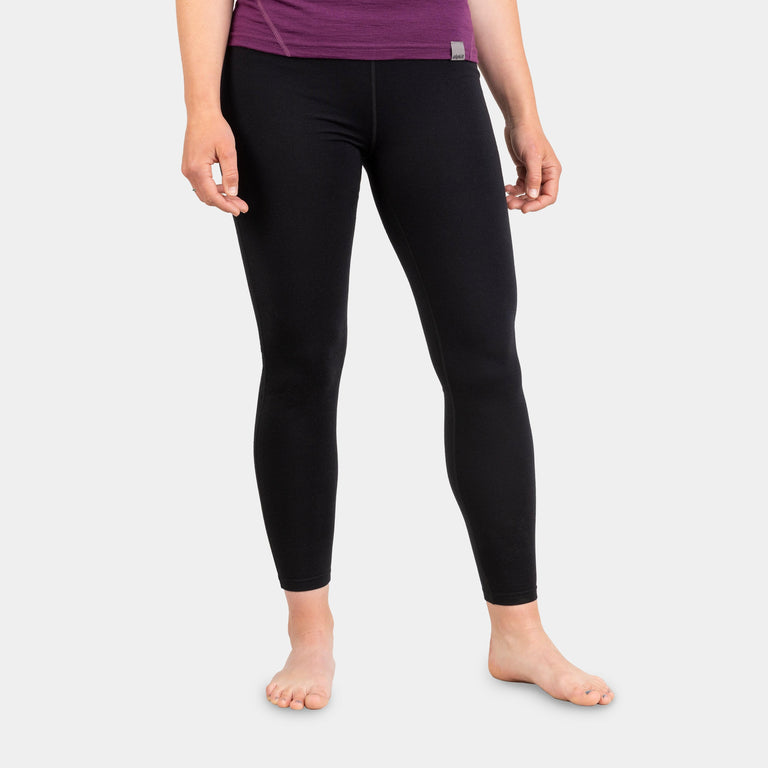
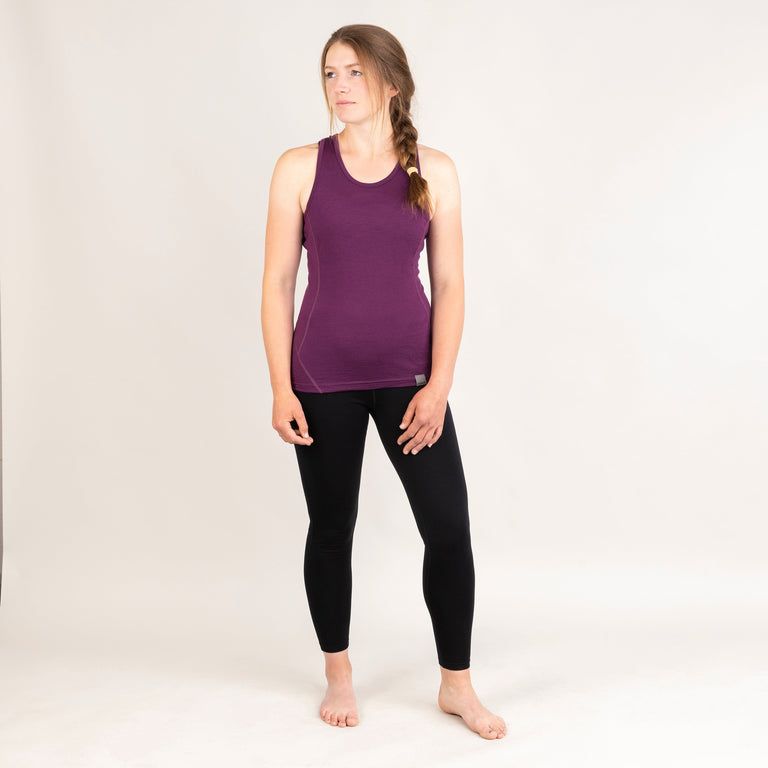
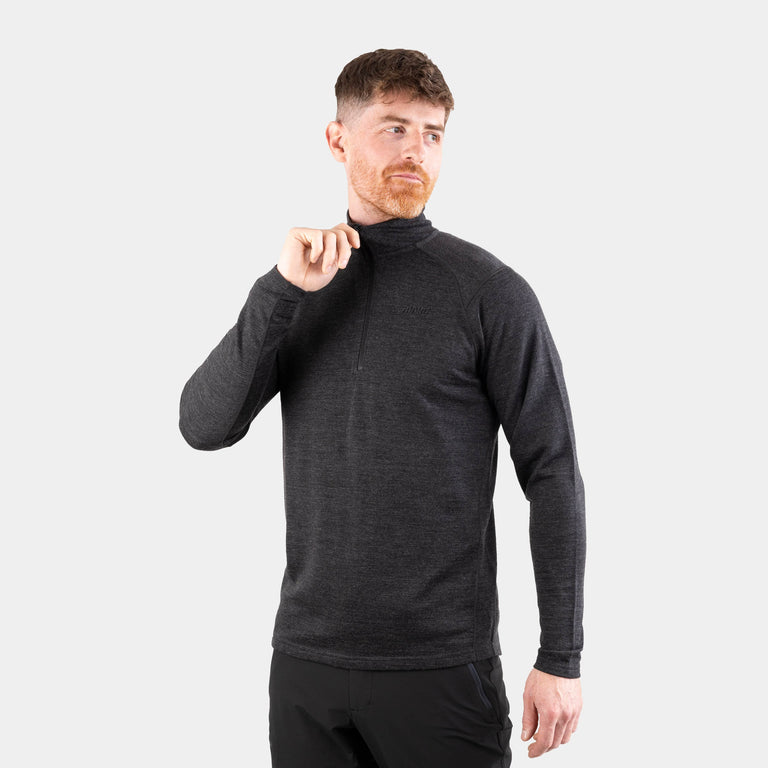
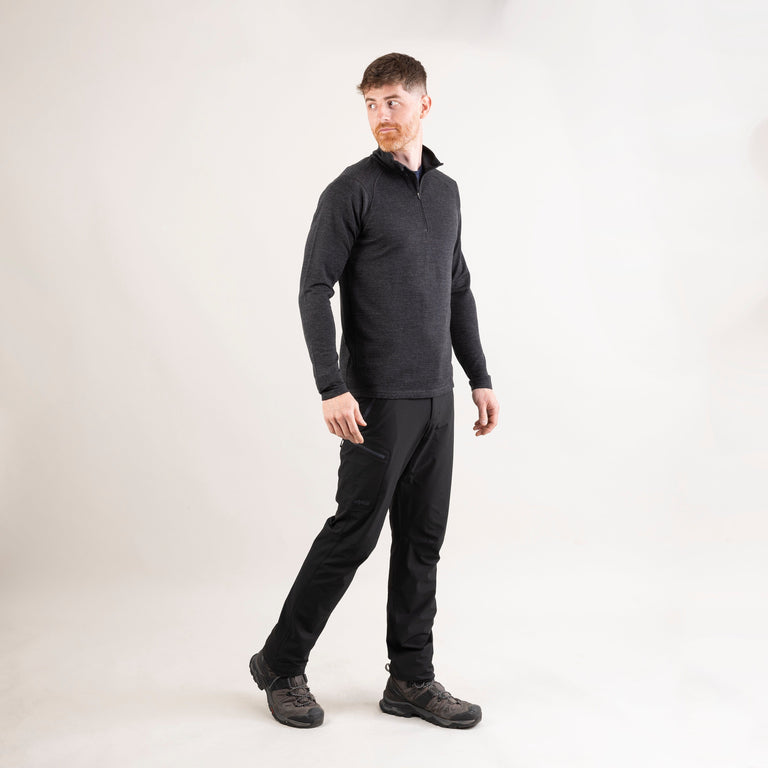
![Aztec Short Sleeve [Mens]](http://alpkit.com/cdn/shop/files/mens-aztec-short-sleeve-2025-outer-space.jpg?v=1754662923&width=768)
![Aztec Short Sleeve [Mens]](http://alpkit.com/cdn/shop/files/aztec-ss-mens-2025-jasper-1.jpg?v=1762536231&width=768)